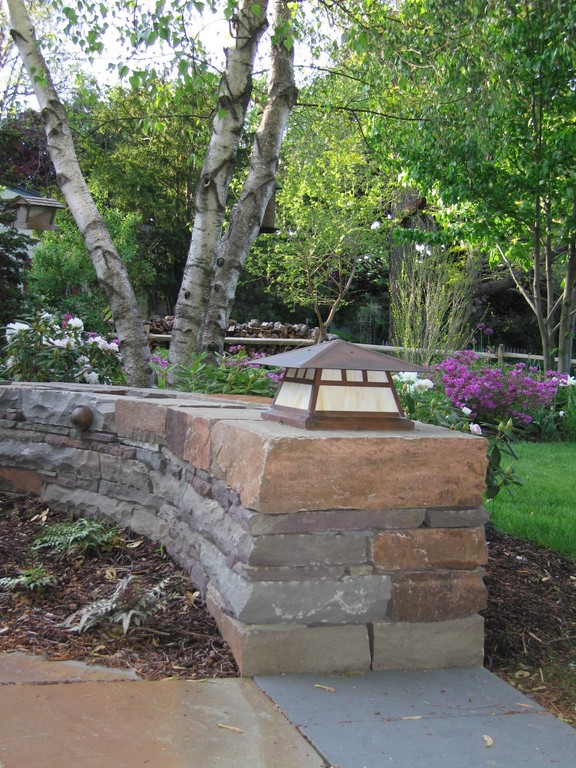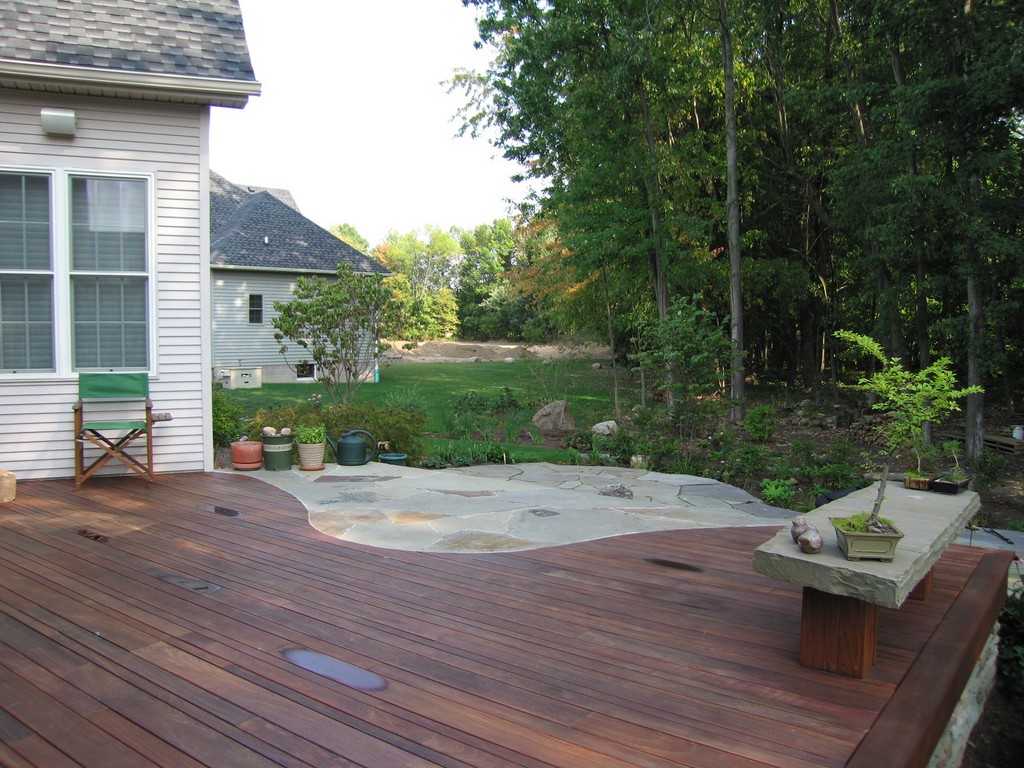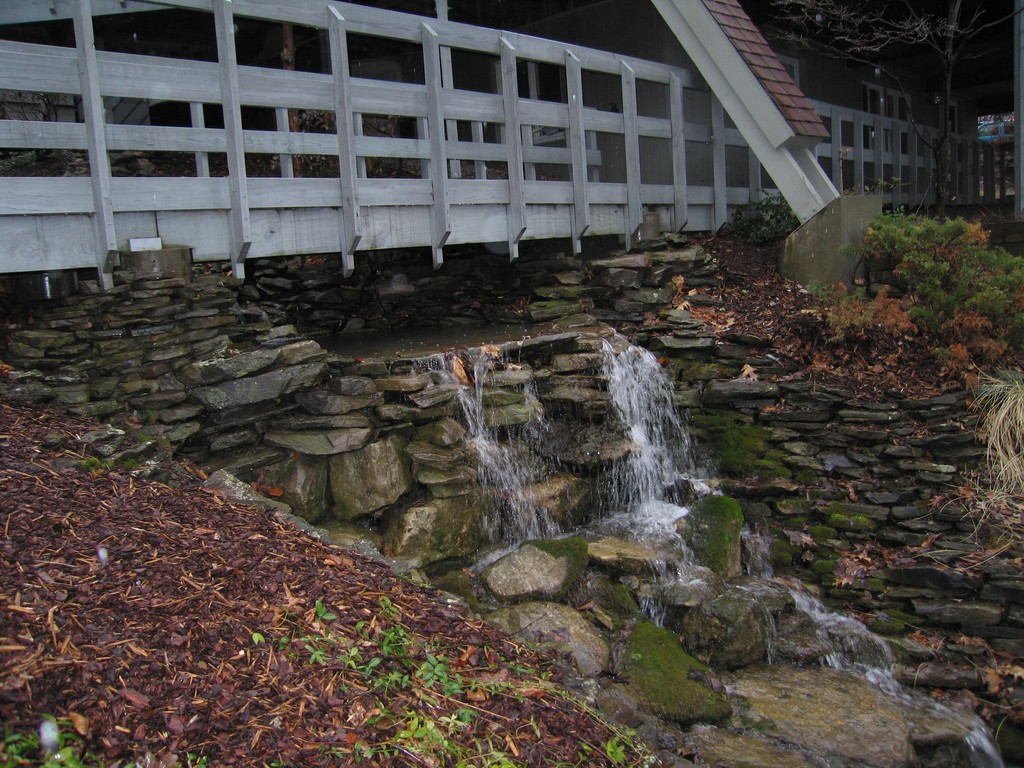Sustaining Quality

It seems that everyone’s talking about “sustainability” these days, with the usual thought being that, as exterior designers, good environmental stewardship must be one of our main missions.
But what is sustainability? What do watershapers need to do to encompass this philosophy? As important, what does it mean to our clients, and where are they in all of this?
According the numerous sources I’ve consulted, sustainability is defined as striving for the best outcome for both human and natural environments, now and well into the future. In other words, it’s about configuring human activity in such a way that society and its members are able to meet their needs and express their greatest potential while preserving biodiversity and natural ecosystems.
That’s definitely a Big Picture concept, and accepting it (as I do) means we should all – irrespective of socioeconomic status, career choices and lifestyles – live our lives while taking no more from nature than we need, creating no more waste than is absolutely necessary and doing our best to meld the two goals by doing what we can to turn waste into usable commodities.
IN HARMONY
I’m not suggesting that anyone should stop installing watershapes or patios or landscape plantings or irrigation systems or anything else: What I am saying is that we should be thinking about where our supplies come from, how they are being shipped, how much waste we generate on our projects and any of a number of other things we do that influence how future generations will live.
So how do we go from being the disposable society to being a sustainable one? The great news is that it doesn’t take a tremendous amount of sacrifice – just a different way of looking at things and a concerted effort to educate ourselves as to what’s involved.
There are lots of good models out there. In many cases, for example, forward-thinking developers are creating buildings that are at least partially self-sustaining through use of established energy-generating technologies such as windmills and solar panels that help to offset a building’s power needs. They use reflective glass that allows light in but not heat to provide natural lighting for workspaces, thereby helping to keep electricity use down. Some are even taking simple advantage of the alignment of their structures relative to the sun in order to maximize natural heating and lighting potential.
| The concept of ‘buying locally’ is a key concept in sustainability, basically because the environmental cost of shipping heavy materials great distances is something that can and should be counted in more than dollars and cents. In this case, we could have made this wall from an exotic stone trucked it in from across the continent, but instead we used a stone from a quarry just 300 miles away. |
As exterior designers, it may not seem that we’re involved at a level that enables us to influence such decisions, but enough of us have the opportunity to meet with clients before ground is broken that I think we have a responsibility to raise the issue and help direct structure placement and orientation. Indeed, simple decisions about which direction a house faces can have monumental impact on energy use, site preservation and lifestyle.
I believe, in short, that this is our future and that we all need to get engaged in considering our role in shaping the environment and minimizing potential threats to it. Our planet is loaded with natural resources that make our lives easier, but we need to use them wisely and conserve them when we can.
And although this movement may not have spread strongly to the watershaping realm as yet, it’s clear that big developers and businesses are all jumping on the bandwagon, if only to seem like good members of the community. And they’re doing so because consumers are insisting that they climb aboard!
MAKING THE MOST
It doesn’t matter what motivates us to join the sustainability movement: What matters is that you take up its challenges in ways that benefit the Earth, our clients and watershaping.
I’m also a believer in personal responsibility and don’t think we can wait around for government and big business to take the lead. What excites me most about this, in fact, is that as designers and installers we’re beautifully positioned to influence our clients in making good decisions and then ensuring their implementation.
To that end, for example, one of my goals in 2007 was to do my best to get through the entire year without having to bring any dumpsters onto my job sites. While I haven’t been entirely successful (we removed a good number of pressure-treated decks this year and had no other choice than to haul any unusable portions to the landfill), we substantially succeeded in minimizing what we threw away.
In a number of cases, we removed old concrete pavers from residences in advance of replacing them with other materials such as stone. Rather than take the removed pavers to the dump, we stacked them on pallets and put them at the curb of the client’s home or our facility with a sign saying “free.” In several cases, the pavers were gone within hours.
We used this same approach with old grills, used pallets and even empty nursery containers, giving proof to the old saw that one person’s trash is another person’s treasure. It’s a simple solution, but it worked and we’ll keep on applying it.
We also did the obvious recycling, salvaging wood from structures we dismantled and doing as much as we could to save any reusable materials. Old barn beams and panels worked their ways into many of our projects, and we reused brick, stone, concrete and plants. True, it takes a bit of design ingenuity and some thinking outside the proverbial box, but in many cases recycling makes perfect sense and the materials work themselves perfectly into new designs.
I’ve also focused a lot of thought on basic energy conservation, especially when it comes to lighting. I only use low-voltage systems not only because they’re less expensive to install, but also because they use less energy in the long run. I also use photo-cell/timer combinations (to turn lights on at dusk and off at bedtime) along with motion sensors. I’m even beginning to warm to LED lamps: Although they have their drawbacks at the moment, I see them as the future when it comes to landscape lighting.
EVERYWHERE YOU TURN
The odd thing about this line of thought is that the opportunities you find seem to multiply like rabbits as you ponder the possibilities.
We can, for example, conserve energy by how we choose to move water in our watershapes. No matter the type of feature – from large-scale cascades to small-scale overflowing urns – they all need pumps of some sort, and I now work only with the highest-efficiency models I can get my hands on. They may cost more up front, but the energy savings for the life of the system greatly outweigh the initial expense.
I use timers here as well, because no harm is done by shutting off waterfalls at night when nobody’s looking. It won’t significantly affect water quality, and it allows for system operation at a fraction of the full-time operating cost.
And then there’s the whole realm of considerations swirling around the materials we select and where they originate. In sustainability terms, the rallying cry is “buy local,” because shipping across the country or, in the case of stone, from the next state can add seriously to the overall environmental impact of what we do.
| Some materials themselves are ‘sustainable,’ as is the case with this decking made with Ipé, a beautiful, fast-growing, readily harvested Brazilian hardwood. Yes, it comes from far away, but it doesn’t deplete our stock of far-less-renewable alternatives such as redwood. |
Yes, we all clamor for the prestige of using that rare, imported stone on the patio or around the pool, but the plain truth is that almost every area has good stocks of perfectly presentable local stone.
I am fascinated that we as humans place greater value on materials brought in from a distance in place of local resources; maybe it’s an expression of the grass-is-greener principle? I’m amused when I read, for example, of a northern California project that uses Pennsylvania or New York Bluestone and describes its wildly exotic value. Certainly it’s a great material and I love using it, but where I live and work it’s about as un-exotic as it gets.
My point is, common local materials are just as worthy as products shipped in from Peru or Italy or China. Yes, if an exotic stone is the best fit for a project, there’s nothing wrong with procuring it. What puzzles me is when a local material will do just as well but a distant one is brought in strictly for snob appeal.
So whenever I can, I use locally quarried limestone, granite, quartzite, Bluestone and flagstone: They’re gorgeous and relatively inexpensive, too – and there’s also the fact that it takes great amounts of fuel and carrying cost to ship materials over roads and seas. I’m not saying we should stop importing exotic materials (I, for one, love Peruvian Travertine and Mexican Beach Pebbles), but we should balance those indulgences when we can with more sustainable options.
INTO THE WATER
As watershapers, we all appreciate the fact that water is our most primary “material” – and it should come as no surprise that it’s a key consideration in sustainability all on its own, although not necessarily in ways we might expect.
I read a study not long ago that said if we took all the lawns in the United States and placed them side by side, they’d cover an area about the size of Pennsylvania. That’s a lot of mowing, fuel, fertilizer and, ultimately, pollution. But what I get stuck on is how much water all that lawn consumes and how much potable gallonage we dedicate to maintaining landscapes of this sort.
And what’s truly amazing is that lots of those green expanses are in the middle of deserts, where you’ll find the most amazing emerald-green golf courses on the planet. Those glorified lawns use countless thousands of gallons of water daily to keep them looking good, and in many cases, what they’re drinking is liquid that would otherwise serve as tap water for local communities.
This sort of questionable water use isn’t limited to desert climes. In the rest of the country, where we get considerably more rain than the desert Southwest, we have this great resource falling out of the sky but seldom think about where it goes – that is, down our gutter systems and across dirty parking lots into storm drains and then into our natural waterways loaded with contaminants collected along the way. In my book, we’re wasting that rainwater.
As an alternative, I’m now suggesting to clients – particularly those who are just starting to build – that they should install cisterns to store rainwater before it becomes runoff. This water can then be used for landscape irrigation and other non-potable uses, such as flushing toilets. Even with established structures, I suggest installing rainwater-collection barrels at every downspout around the house. This water can be used to water plants, and a small pump can feed this water to soaker systems to make that chore even easier.
And for all my clients, I advise them to irrigate their yards only in the early morning, urge them to check their irrigation heads regularly to make certain they’re not watering the street and suggest they install rain sensors that will turn the irrigation system off when it’s raining.
We’re also suggesting to our commercial clients that they should install rooftop gardens: Not only do these use up to 100 percent of the rainwater that falls on them, but they also provide landscaped environments on tops of buildings that reduce heating and cooling costs, cool the general environment and last longer than typical flat roofs. (This is a subject to which I’ll return in a future column.)
GETTING THOUGHTFUL
The key to making sustainability work on the level of watershaping and exterior design is becoming more thoughtful about what we do and how we approach it.
Now, for example, when I work on a large site, I’m always thinking about where the runoff from rooftops, decks and other hardscape will go. Then I use my design skills to create interesting watercourses, such as dry creek beds and waterfalls and rain gardens (that is, areas with plants that can withstand periodic inundation with water but can also handle dry conditions).
| Rather than install a pipe culvert for invisible handling of drainage issues on this property, we decided instead to pursue a more eye-catching solution by designing a watercourse that has visual appeal when dry and flows robustly when runoff water is available to feed it. |
Water falling on these properties flows along these waterways and eventually reaches these rain gardens, where it slowly percolates through the plants’ root systems, is swept clean of contaminants and returns eventually to groundwater. I like to think of these rain gardens as miniature, man-made wetlands.
And I haven’t even gotten into watershape-related conservation and ways of reducing evaporative losses by placing our vessels so they’re sheltered from the wind, running fountains with anemometers to shut them down when the breezes kick up, using auto-fill devices to maintain efficient operating levels and a host of other steps that can be taken to maximize the efficiency of our water use.
As exterior designers, we need to consider the environment in which our work is found and use our powers of persuasion to influence clients to do the right thing. They entrust us to design and install beautiful watershapes and landscapes that will benefit their lives, and as I see it, it’s up to us to help them develop a vision of what they want that encompasses the well-being of their children and their children’s children.
That may make me sound like a grand environmental missionary, but the fact is I’m not advocating that we ditch our cars and televisions or abandon Peruvian Travertine. All I’m saying is that we’ll all benefit by doing what we can to lessen our impact on the land. We may not be able to undo damage already done, but I like to think we can be a bit more respectful of the planet while creating works of art of which we and our clients can be proud.
Bruce Zaretsky is the owner of Zaretsky and Associates, a landscape design/installation/consulting firm in Rochester, N.Y. Since starting in the landscape design industry in 1979, he and his firm have become nationally recognized for their creative and inspiring landscapes and waterfeatures in projects ranging from small residential spaces to innovative public projects. Zaretsky also works as the Landscape Consultant to the Town of Penfield, working with developers to ensure that the city’s beauty is preserved. He teaches courses on landscape design and installation at the Chicago Botanic Garden and at national landscape conferences, and recently his firm has placed emphasis on conceiving and installing healing and meditation gardens for healthcare facilities and on promoting sustainability and conservation in the landscape industry.













